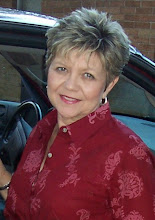Book Drawing: Leave a comment here or email me at writecat@consolidated.net and I’ll enter your name for a March book drawing to win a copy of The Stained Glass Pickup.
January of this year, my husband received three solicitations in the mail. They reminded both of us that life is marching on and leaving its boot tread.
One company wanted to sell him a burial policy. Another urged him to buy a Miracle Ear hearing aid, and the third recommended preordering a tombstone. Those purchases will no doubt be made some day, but for now, I’d rather invest my money and time in people and in personal growth than a chunk of marble with chiseled names.
We’re several years from even drawing social security and reminders are all around us that you’re not what you used to be. Growing older is inevitable, but even though the body declines, a person can be renewed in other ways.
In Susannah Seton’s book, Simple Pleasures of the Garden, she says, “The garden grows us.” As Easter approaches this year, I couldn’t shake her words out of my mind. The earth’s bounty wasn’t meant to only nourish us physically, to keep us “healthy” until we die.
This God-created planet, with food sources, air, water and beauty, is a great big garden where we were God supplies all we need to mature intellectually, morally, and emotionally. God intentionally planted us here creating a perfect environment for good growth. We can thrive here.
This is a lesson the women learned when they visited the garden-tomb of Jesus. While alive, he had given them visuals of a better life. He brought people back to life, to breathe again. He took a 12 year old girl’s hand and urged her back to this garden to grow some more (John 5:24).
On another day, a funeral procession wound toward the city limits. A widowed woman prepared to bury her son, but Jesus halted the makeshift bier and said to her, “Don’t cry” (Luke 7). He had resurrection plans, to give her son back, to give opportunity for growth in this earth-garden.
And Lazarus, who had been gone four whole days, Jesus called him from his tomb. He hobbled out still bound in strips of burial cloths. A stunned crowd saw life reborn, emerging in a cemetery.
The women at Jesus’ garden tomb expected to continue their mourning about decline and loss, but a surprise awaited them. They were greeted by angels not death. These messengers said, “He is risen. He is not here!”
Our spirits, the inner person, does not have to age. In Christ they are renewed every day. And it was near Jesus’ empty garden tomb, God further revealed his perfect plan of immortal life—no retirement, no graves, and no tombstones. And he calls us to grow because of the garden message, “He is risen.”
Happy Easter!
Friday, March 21, 2008
Friday, March 14, 2008
Light Always Wins
Book Drawing: Leave a comment here or email me at writecat@consolidated.net and I’ll enter your name for a March book drawing of The Stained Glass Pickup.
During the last week of Jesus’ life on earth, there are references in the gospels about darkness, both nighttime and an evil blackness. Historical documents also mention the three hours of unnatural darkness while Christ was on the cross, one even written by Pontius Pilate.
***********************************************************************************
The elements that came together and brought about the crucifixion of Jesus included folk with dark evil souls. Judas, one of Jesus’ closest companions, showed his true color. When Jesus and the disciples gathered for the last supper, the Master said, “One of you is going to betray me.” Startled by his announcement, the disciples wanted to know which one of them would do so. Jesus identified Judas as the betrayer.
“Then, dipping the piece of bread, he gave it to Judas Iscariot . . ..As soon as Judas took the bread Satan entered into him” (John 13:26,27). Judas then left the upper room and the Apostle John closes the scene by writing, “And it was night.”
In Gethsemane, Judas assisted in identifying Jesus to the unruly crowd, and the Son of God was arrested under the cover of darkness. That night Jesus said to his captors, “Every day I was with you in the temple courts, and you did not lay a hand on me. But this is your hour—when darkness reigns” (Luke 22:53).
The next day throughout a bright morning, Jesus hung on a cross, but then a solemn darkness settled over the earth at noon. Crucified about nine in the morning, Jesus was on the cross for six hours, and during the final three hours, an unnatural “darkness came over the whole land until the ninth hour, for the sun stopped shining” (Luke 23:44).
Through correspondence, independent witnesses later corroborated that the sun didn’t illuminate the earth for three hours. Tertullian wrote to the Roman senator Proculus: “The light of day was withdrawn, when the sun at the very time was in his meridian blaze . . . you yourselves have the account of the world-portent still in your archives!”
Another account of the withdrawal of sunlight is in a report Pontius Pilate sent to Tiberius, emperor of Rome. “There was a darkness over the whole earth, the sun having been completely hidden, and the heaven appearing dark, so that the stars appeared.”
Pilate further wrote, “I suppose your reverence is not ignorant of, because in all the world they lighted lamps from the sixth hour until evening.” He also wrote “the moon, being like blood, did not shine the whole night, and yet she happened to be at the full.” The unusual darkness must have been unnerving, frightening. Did God clothe the cross in darkness because he couldn’t bear the world gawking any longer upon the suffering perfect Son?
On that long ago Sunday at dawn, when devoted women went to Jesus’ tomb an angel said to them, “Do not be afraid, for I know that you are looking for Jesus, who was crucified. He is not here; he has risen, just as he said” (28:1, 5, 6).
Centuries before Jesus came to earth, Isaiah prophesied: “The people living in darkness have seen a great light; on those living in the land of the shadow of death a light has dawned.” The refreshment of a clean start is the promise made at the empty tomb of Jesus.
From the cradle to the cross, read Jesus’ story. His total goodness has a way of shining into dark secrets and dispelling shadows. God draped darkness over the evil deeds of the cross, but Sunday dawned and Jesus rose from the dead, proving his power and giving us hope.
Light always wins. Light always overcomes darkness.
During the last week of Jesus’ life on earth, there are references in the gospels about darkness, both nighttime and an evil blackness. Historical documents also mention the three hours of unnatural darkness while Christ was on the cross, one even written by Pontius Pilate.
***********************************************************************************
The elements that came together and brought about the crucifixion of Jesus included folk with dark evil souls. Judas, one of Jesus’ closest companions, showed his true color. When Jesus and the disciples gathered for the last supper, the Master said, “One of you is going to betray me.” Startled by his announcement, the disciples wanted to know which one of them would do so. Jesus identified Judas as the betrayer.
“Then, dipping the piece of bread, he gave it to Judas Iscariot . . ..As soon as Judas took the bread Satan entered into him” (John 13:26,27). Judas then left the upper room and the Apostle John closes the scene by writing, “And it was night.”
In Gethsemane, Judas assisted in identifying Jesus to the unruly crowd, and the Son of God was arrested under the cover of darkness. That night Jesus said to his captors, “Every day I was with you in the temple courts, and you did not lay a hand on me. But this is your hour—when darkness reigns” (Luke 22:53).
The next day throughout a bright morning, Jesus hung on a cross, but then a solemn darkness settled over the earth at noon. Crucified about nine in the morning, Jesus was on the cross for six hours, and during the final three hours, an unnatural “darkness came over the whole land until the ninth hour, for the sun stopped shining” (Luke 23:44).
Through correspondence, independent witnesses later corroborated that the sun didn’t illuminate the earth for three hours. Tertullian wrote to the Roman senator Proculus: “The light of day was withdrawn, when the sun at the very time was in his meridian blaze . . . you yourselves have the account of the world-portent still in your archives!”
Another account of the withdrawal of sunlight is in a report Pontius Pilate sent to Tiberius, emperor of Rome. “There was a darkness over the whole earth, the sun having been completely hidden, and the heaven appearing dark, so that the stars appeared.”
Pilate further wrote, “I suppose your reverence is not ignorant of, because in all the world they lighted lamps from the sixth hour until evening.” He also wrote “the moon, being like blood, did not shine the whole night, and yet she happened to be at the full.” The unusual darkness must have been unnerving, frightening. Did God clothe the cross in darkness because he couldn’t bear the world gawking any longer upon the suffering perfect Son?
On that long ago Sunday at dawn, when devoted women went to Jesus’ tomb an angel said to them, “Do not be afraid, for I know that you are looking for Jesus, who was crucified. He is not here; he has risen, just as he said” (28:1, 5, 6).
Centuries before Jesus came to earth, Isaiah prophesied: “The people living in darkness have seen a great light; on those living in the land of the shadow of death a light has dawned.” The refreshment of a clean start is the promise made at the empty tomb of Jesus.
From the cradle to the cross, read Jesus’ story. His total goodness has a way of shining into dark secrets and dispelling shadows. God draped darkness over the evil deeds of the cross, but Sunday dawned and Jesus rose from the dead, proving his power and giving us hope.
Light always wins. Light always overcomes darkness.
Labels:
crucifixion,
Empty tomb,
Judas,
Light of the World
Friday, March 07, 2008
February-Book Winners
Congratulations! Winners of the February book drawing. A copy of The Stained Glass Pickup went to Jewell P. from Kentucky. Cindi and Kristi from, Oklahoma and Illinois won Multnomah’s donated copies of Rattled, Surviving Your Child’s First Year Without Losing Your Cool.
Book Drawing: Leave a comment at http://stainedglasspickup.blogspot.com/ or email me at writecat@consolidated.net and I’ll enter your name for a March book drawing to win a copy of The Stained Glass Pickup. Later this year, I’ll sponsor another contest to win A Scrapbook of Christmas Firsts ~ Stories to Warm Your Heart and Tips to Simplify Your Holiday. A book I co-authored with several other writers.
Book Drawing: Leave a comment at http://stainedglasspickup.blogspot.com/ or email me at writecat@consolidated.net and I’ll enter your name for a March book drawing to win a copy of The Stained Glass Pickup. Later this year, I’ll sponsor another contest to win A Scrapbook of Christmas Firsts ~ Stories to Warm Your Heart and Tips to Simplify Your Holiday. A book I co-authored with several other writers.
The Olive Press
Then Jesus went with his disciples to a place called Gethsemane, and he said to them, Sit here while I go over there and pray. Matthew 26:36
Luke wrote that Jesus and his disciples made regular trips to the Mount of Olives, a ridge running north and south of Jerusalem that’s 200 foot higher than the temple mound. The mountain received its name from the abundant olive groves. The word “gethsemane” is associated with the garden where Jesus prayed before his Crucifixion and where Judas betrayed him.
In Hebrew, the word “gethsemane” means olive press. Olive trees were of great importance to Judean economy and everyday life. Not only were olives eaten but the oil was used in lamps, as a preservative, and a lubricant for skin care.
Ray Vander Laan explains the long-ago process for extracting olive oil. “Whole olives were put into a circular stone basin in which a millstone sat.” An animal harnessed to the millstone walked in a circle rolling the stone and breaking the olives. “The cracked olives were scooped into burlap bags,” then the bags were stacked under “a huge stone column—a gethsemane.”
The enormous weight of the stone column pressed on the bags of olives forcing out the precious oil. The oil collected in a pit at the base of the gethsemane. It was near an olive press where Jesus agonized in prayer before his Crucifixion. His burden was great and it pressed down on him in such a manner that even God’s Son asked excuse from his mission.
During that evening, Jesus knelt and prayed several times, “Father, if you are willing, take this cup from me; yet not my will, but yours be done” In great anguish, he prayed. The stress took a toll and weighed down, pressed upon, “his sweat was like drops of blood falling to the ground” (Luke 22:42, 44). That night, the enormity of the world’s sins bore down on him.
Another fact about aging olive trees is when the trunk thickens the leaves cannot give the nourishment the trunk needs to survive. The tree is then cut back to a stump, and that’s when a new shoot will appear.
God used this gardening example to say, “A shoot will come up from the stump of Jesse . . . . The spirit of the LORD will rest on him” (Isaiah 11:1, 2). The world never encountered anyone like this new green shoot, the Branch Jesus, who could give new life to a sinful world.
Although God often used common sights like olive trees and gardening to express spiritual messages, there was nothing common about his Son. Isaiah further wrote about him, “Righteousness will be his belt and faithfulness the sash around his waist” (11:5). Wholehearted devotion to God and us characterized the Son of God who prayed near a place we call Gethsemane.
Luke wrote that Jesus and his disciples made regular trips to the Mount of Olives, a ridge running north and south of Jerusalem that’s 200 foot higher than the temple mound. The mountain received its name from the abundant olive groves. The word “gethsemane” is associated with the garden where Jesus prayed before his Crucifixion and where Judas betrayed him.
In Hebrew, the word “gethsemane” means olive press. Olive trees were of great importance to Judean economy and everyday life. Not only were olives eaten but the oil was used in lamps, as a preservative, and a lubricant for skin care.
Ray Vander Laan explains the long-ago process for extracting olive oil. “Whole olives were put into a circular stone basin in which a millstone sat.” An animal harnessed to the millstone walked in a circle rolling the stone and breaking the olives. “The cracked olives were scooped into burlap bags,” then the bags were stacked under “a huge stone column—a gethsemane.”
The enormous weight of the stone column pressed on the bags of olives forcing out the precious oil. The oil collected in a pit at the base of the gethsemane. It was near an olive press where Jesus agonized in prayer before his Crucifixion. His burden was great and it pressed down on him in such a manner that even God’s Son asked excuse from his mission.
During that evening, Jesus knelt and prayed several times, “Father, if you are willing, take this cup from me; yet not my will, but yours be done” In great anguish, he prayed. The stress took a toll and weighed down, pressed upon, “his sweat was like drops of blood falling to the ground” (Luke 22:42, 44). That night, the enormity of the world’s sins bore down on him.
Another fact about aging olive trees is when the trunk thickens the leaves cannot give the nourishment the trunk needs to survive. The tree is then cut back to a stump, and that’s when a new shoot will appear.
God used this gardening example to say, “A shoot will come up from the stump of Jesse . . . . The spirit of the LORD will rest on him” (Isaiah 11:1, 2). The world never encountered anyone like this new green shoot, the Branch Jesus, who could give new life to a sinful world.
Although God often used common sights like olive trees and gardening to express spiritual messages, there was nothing common about his Son. Isaiah further wrote about him, “Righteousness will be his belt and faithfulness the sash around his waist” (11:5). Wholehearted devotion to God and us characterized the Son of God who prayed near a place we call Gethsemane.
Labels:
Gethsemane,
Jesus' prayers,
Judas,
Olive Press
Subscribe to:
Comments (Atom)








